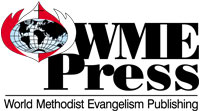Tomorrow, we will be celebrating Christ the King Sunday (or "The Reign of Christ the King")! - It is the last Sunday after Pentecost and the last Sunday of the Christian year. It is also the Sunday just prior to our entering into the holy season of Advent.
The observance of Christ the King Sunday is really a relatively new celebration. It was originally instituted by Pius XI, Bishop of Rome, for celebration on the last Sunday of October. However, after Vatican II, it was moved to its current location on the Christian calendar.
Incidentally, no less than +N.T. Wright, has argued that Ascension Sunday is the proper celebration of Christ the King, rather than the creation of this relatively new celebration. - Nevertheless, I think that this setting, in addition to Ascension Sunday, has much to offer the Church. An example of which can be seen in the lectionary readings; especially the Gospel reading, which is taken from John 18:33-37. - Jesus' contrast between the citizens of His Kingdom and those of the kingdoms of this world is especially timely given our age of terrorism, military responses and the refugee crisis.
In honor of Christ the King Sunday, find, below, a copy of Charles Wesley's great hymn, “Rejoice, the Lord Is King.” - The hymn will be printed as it appears in the Sing to the Lord (Nazarene) hymnal and most other hymnals. (It seems that The United Methodist Hymnal includes some rather strange editorial changes in verses 1 and 4; changes that seem not to make sense. The predecessor hymnal, The Methodist Hymnal, retains the hymn as appears elsewhere.)
It is also interesting (and puzzling) that this hymn does not seem to appear in volume 7 of The Works of John Wesley: A Collection of Hymns for the Use of The People Called Methodists. If it had, perhaps light may have been shed as to why the UMC hymnal changed the text.
Nevertheless, here follows the hymn!
Rejoice, the Lord Is King
1. Rejoice, the Lord is King! Your Lord and King adore!
Rejoice, give thanks, and sing, And triumph evermore.
Lift up your heart;
Lift up your voice! Rejoice; again I say: rejoice!
Lift up your heart;
Lift up your voice! Rejoice; again I say: rejoice!
2. Jesus, the Savior, reigns, The God of truth and love.
When he had purged our stains, He took His seat above.
Lift up your heart;
Lift up your voice! Rejoice; again I say: rejoice!
Lift up your heart;
Lift up your voice! Rejoice; again I say: rejoice!
3. His kingdom cannot fail; He rules o'er earth and heav'n.
The keys of death and hell Are to our Jesus giv'n.
Lift up your heart;
Lift up your voice! Rejoice; again I say: rejoice!
Lift up your heart;
Lift up your voice! Rejoice; again I say: rejoice!
4. Rejoice in glorious hope! Our Lord, the Judge, shall come
And take His servants up To their eternal home.
Lift up your heart;
Lift up your voice! Rejoice; again I say: rejoice!
Lift up your heart;
Lift up your voice! Rejoice; again I say: rejoice!
This Sunday (and every day!) may we all rejoice and worship Christ our King, not only with our lips but in our lives, by giving up ourselves to His service, and by walking before Him in holiness and righteousness all our days (cf., "A General Thanksgiving," BCP). - May all glory be to God the Father, Christ our King, and the Holy Spirit! Amen!
_____________________________________
This post relied on previous posts on this same topic.







.png)






.png)
